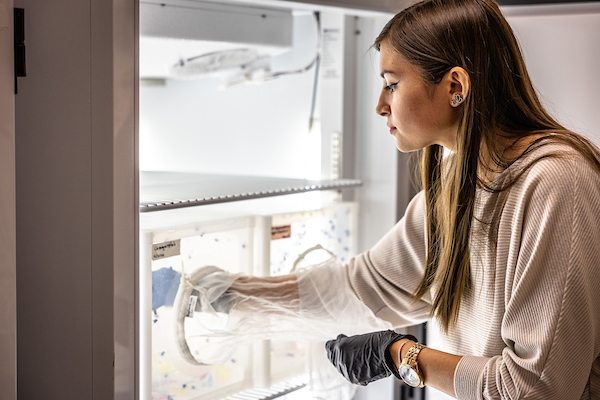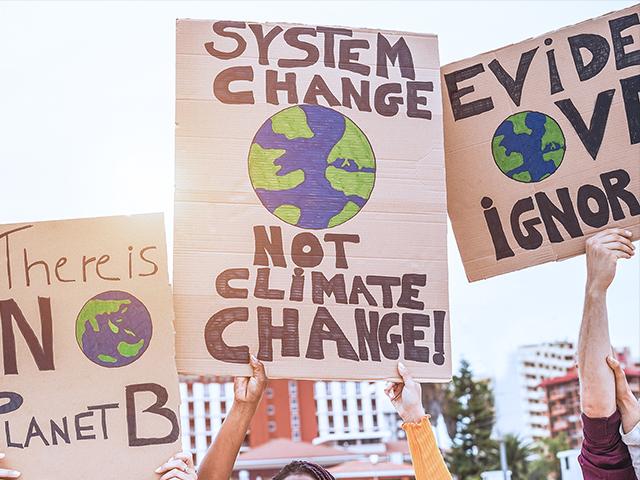January 31, 2023
ASU Professor Develops Advanced Blowfly Database for Murder Investigation
When investigators arrive at the scene of a crime, many questions arise.
When did the murder happen? What was the cause of death? Was the body moved?
The answers to these questions may come from an unexpected source – bluebottles.
Bluebottles typically arrive at a crime scene just 10 minutes after a murder, according to Jonathan Parrott, an assistant professor of forensic science at Arizona State University. They are drawn to bodily fluids and gases associated with a corpse’s decomposition in the open air and, like a fly on a wall, can reveal mysteries of murder.
However, in order to be able to answer these questions accurately, the researchers need to know the exact life cycle of the blowfly. This is where Parrott’s research comes into play.
Over the past two years, the forensic entomologist has developed one of Arizona’s first and much-needed databases of forensically important blowflies to assist both crime scene investigators and the courts. The data will help provide more accurate and robust estimates of time of death from insect evidence.
“Previously, this data was lacking,” says Parrott, who works at ASU’s New College of Interdisciplinary Arts and Sciences.
“What makes our research unique is that no developmental or DNA data was available prior to our project,” says Parrott, who is also a board member of ASU’s Future of Forensic Science Initiative — a transdisciplinary center of scientists and practitioners that pioneered the work provide a world-class intellectual space for forensic science. “We catalog both morphological and genetic data.”
Although it’s a relatively new technology, Parrott says, “DNA is the gold standard in forensic science.”
“Having this type of data will empower forensic entomology in the criminal justice system.”
Assistant Professor Jonathan Parrott studies blowflies in his forensic entomology research lab on ASU’s west campus. Photo by Charlie Leight/ASU News
Post-Mortem Messages
The use of blowflies to solve homicides is nothing new. According to the Chinese book Collected Cases of Injustice Rectified, written in 1247, it dates back to 13th-century China when a peasant was killed by a sickle. Villagers were asked about their sickles and the killer was discovered when swarms of flies settled on the small blood stains on a sickle.
The science has advanced since then, but one question remains — how does a bluebottle sneak into a forensic homicide investigation?
The secret lies in the life cycle of the insect. The simplest explanation is that if a fly’s lifespan is 15–30 days from egg to fly, and it takes five days to go from egg to maggot, a maggot-covered corpse would most likely have been dead for five days.
But it’s more complicated than that – hence the need for an accurate species and genetic database.
“Identification is the most important step,” says Parrott. “Because if you misidentify the species, you apply incorrect dates to your estimated time of death.”
And this is where it gets tricky. For example, a species of blowfly found on a body dumped from the road in Chandler, Arizona in the summer may have a different life cycle in Glendale, Arizona in the winter.
Believe it or not, blowflies are like humans in some ways. They react differently to different external conditions.
“I’m from the UK,” Parrott explained. “As a result, I deal with heat very differently than someone who was born in Arizona, even though we’re of the same species. The same goes for bluebottles.”
Factors such as temperature, humidity, and changing seasons can make calculations more complex and time-consuming.
Project Blowfly
Parrott and ASU students working in his lab are two-thirds through the process of compiling the bluebottle database of morphological and genomic data.
This is a huge project, says Parrott, with thousands of bluebottles of forensic importance collected. In addition to identifying species in the Phoenix area, his lab is expanding into surrounding states, particularly areas where data is lacking and disturbance is limited — like national parks and monuments.
“By analyzing species from different areas, particularly at the genetic level, we can answer questions about species migration and possible invasive species, and learn how climate change and human disturbances affect species migration,” he says.
Assistant Professor Jonathan Parrott studies blowflies in his forensic entomology research lab. Photo by Charlie Leight/ASU News
data development
Parrott and his team begin the data collection process with a simple plastic trap baited with a bluebottle favorite – chicken liver. Traps are placed in a closed location just outside the lab where they can be undisturbed. Others are located in certain areas of Chandler and Avondale, Arizona. Between 10 and hundreds of bluebottles are collected each week and returned to the laboratory. At any given time there are about 3,000 bluebottles in the laboratory.
There, insects are divided into different types – nine in all.
Some are placed in vials with an ethanol-water solution. These are examined under the microscope both morphologically and for DNA and RNA.
Others are placed in bug dormitories — boxes covered with netting and placed in an incubator that controls temperature and humidity.
Still others are mounted and classified in showcases.
“We also use the DNA data to create standard operating procedures that are lacking in forensic entomology,” says Parrott. “Because some species of blowflies are very closely related, DNA sequences can distinguish one species from another.”
The data includes species, locations, dates, seasons, temperature, humidity and other conditions. Starting this year, the electronic database will gradually be released to the general public.

Sydnee Wedel, lab supervisor and graduate student in forensic psychology, controls the blowflies in one of the incubators in Assistant Professor Jonathan Parrott’s forensic entomology research lab. The incubators allow researchers to control light, temperature and humidity for the insects. Photo by Charlie Leight/ASU News
Students with research experience rewarded
Parrott’s research lab is located on ASU’s west campus. His study benefits both the forensic community and students who work in his lab.
“It was worth working on the database project. It has expanded my knowledge not only in forensics but also in general entomology,” says Kathryn Melancon, an ASU sophomore major forensic science.
“This project is important in the field of forensic entomology because it helps identify populations of blowflies and their tendency to stay in specific climates and in specific locations,” says Melancon, who plans to work in forensic pathology. “This survey can also be used to monitor population increases and decreases.”
Sydnee Wedel has been working in the laboratory for two years. She is now used to the smell in the lab caused by the decomposition of liver and other foods that flies feast on.
“I can’t even smell it anymore,” says Wedel, who heads Parrott’s lab.
Wedel graduated from ASU in May 2022 with a degree in Criminology and Criminal Justice and now leads the lab as a graduate student.
“I love problem solving and I love science, so it’s perfect for me,” she says.
It is Wedel and the other students who collect the bluebottles from different places.
Wedel says ASU gave her the opportunity to learn how to conduct research effectively and also conduct her own experiments.
After all, she wants to work in a crime lab.
“I really want to help solve crimes,” says Wedel. “And my background here gives me the edge I need to work in a crime lab.
“Knowing about maggots and pupa cases and everything else you need to solve a crime can tell you so much. It can tell you where the body was, where it was moved to, how long it was there, or if it was covered or buried.”
Through her work, Wedel has come to appreciate blowflies, which she previously only considered a nuisance.
“You can learn so much about a murder,” she says, “just from the bluebottles around the body.”
Top photo: Sydnee Wedel, lab supervisor and graduate student in forensic psychology, examines a sample in a cage filled with blowflies in Assistant Professor Jonathan Parrott’s Forensic Entomology Research Laboratory on ASU’s west campus. Photo by Charlie Leight/ASU News









